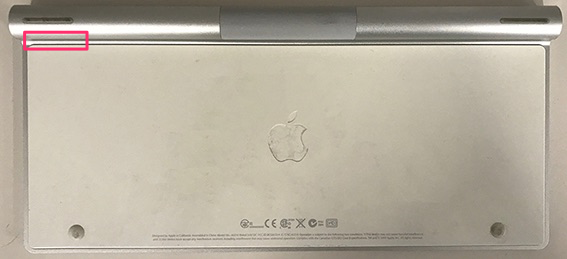Q: Question Does this Apple-Superdrive 8x External USB drive work with the MacBook 12' display 8 GB memory, 4512 GB Flash Storage or just with a Mac Pro? Asked 3 years ago by Madonnaj. A: Answer You should be able to use it on a MacBook Pro or a MacBook Air. In this Video I review the Apple USB Superdrive and also show how to install it on a Macbook pro that already had a optical drive. Click here for a full how.
Symptoms

Symptoms such as these could mean that a device connected to the USB-A , USB-C , or Thunderbolt 3 (USB-C) port on your Mac isn't getting enough power:

- A message says that the device needs more power, the operation can't be completed, or USB devices are disabled until you unplug the device using too much power.
- An operation that requires more power doesn't work. For example, writing to disk requires more power than reading from it.
- The device doesn't turn on or isn't recognized by your Mac.
Solutions
- Use your device as a self-powered device or connect it to a powered USB or Thunderbolt 3 (USB-C) hub if possible.
Self-powered devices get power from an electrical outlet or their own battery. Bus-powered devices get power from the device they're plugged into, such as your Mac. - Reduce the total amount of power needed from your Mac by reducing the number of bus-powered devices connected to your Mac, or using more of them as self-powered devices.
- If your device is plugged into another device (such as a display or multiport adapter) as part of a chain of devices, the other device might not be providing enough power or passing through enough power from your Mac. Plug your device directly into your Mac instead.
- Make sure that the port on your Mac and the cable you're using to connect it to your device both support the same or later USB specification as your device. For example, a device designed to support the USB 3 specification might not get enough power when plugged into a USB 2 port or cable.
- Try a different cable, in case the cable that you're using is damaged or defective. If you're using an adapter with your cable, the adapter could also be damaged or defective.
- If your Mac has multiple Thunderbolt 3 ports, connect your device to a Thunderbolt 3 port farthest away from the current port. For example, if your device is connected to the ports on the left side of MacBook Pro, connect to the Thunderbolt 3 ports on the right side.
- If your device has software (such as drivers or firmware) that can be updated, make sure that it's using the latest software from the manufacturer. To get firmware updates for Apple accessories, update your Apple software.
- Make sure that your Mac is awake and started up from the Mac operating system. Some Apple devices can request extra power only when your Mac is awake or started up from macOS.
Learn more about USB power on your Mac
System Information provides additional detail about USB power on your Mac. Connect the USB device directly to your Mac, then select USB from the sidebar in System Information. For each USB device, System Information shows:
- Current Available: The default power provided by the port to which your device is connected.
- Current Required: The power needed by your device.
- Extra Operating Current: Mac computers and Apple displays introduced after 2006, when directly connected to certain Apple devices such as iPhone or iPad, can provide extra power over one or more ports. The Mac or display must be powered on and awake to provide this extra power. A Mac started from the Windows operating system doesn't provide extra power.
Learn more about the power available under each USB specification, such as USB 2 and USB 3.
Check compatibility
The Apple USB SuperDrive is compatible with Mac models from 2008 and later that don't have a built-in optical drive.
Connect and use your SuperDrive
Apple Usb Superdrive For Macbook Air
To use your SuperDrive, connect it to a USB-A port on your Mac*, then insert a disc.Make sure that the aluminum enclosure of the SuperDrive is facing up.
To connect your SuperDrive to a Thunderbolt 3 (USB-C) or USB-C port on your Mac, you can use one of these adapters:
Eject a disc
To eject a disc, click Finder in the Dock, then choose File > Eject. Or, if your keyboard has an eject key, press and hold .
Apple Usb Superdrive For Macbook Pro
Learn more
* If your SuperDrive doesn't respond when connected to an external display or USB hub, connect your SuperDrive to a USB port directly on your Mac.
